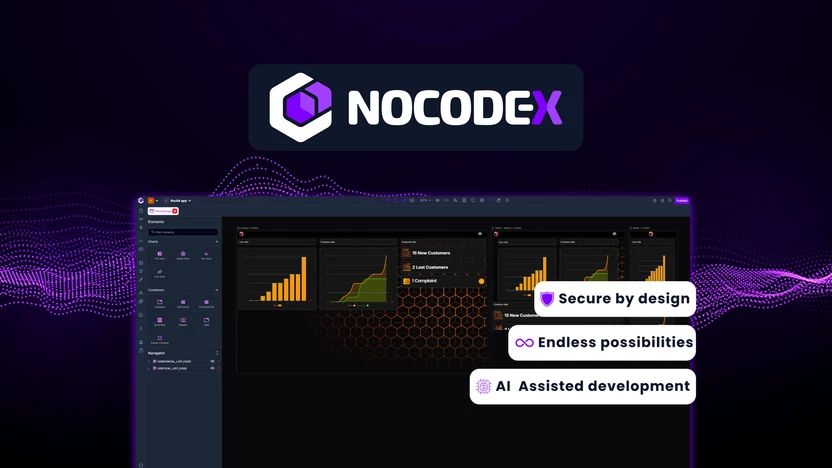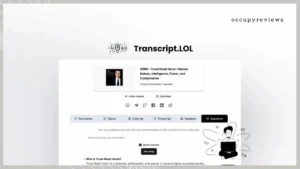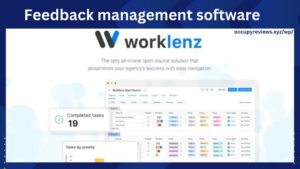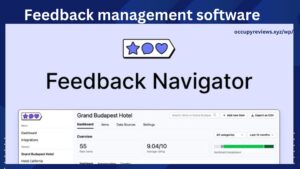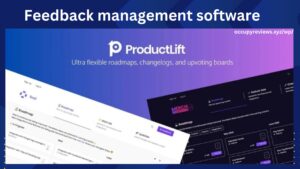Today I will discussion about a software of pricing and use case. This software name is ‘NoCode-X’. What is NoCode-X pricing, we know about this. What are you doing this software, I also was writing about it. So, you can read this.
Many people use it easily and comfortably. Every client is happy to use this ‘NoCode-X’ software.
No-Code App Builder:
This is a platfor interfaces, drag-and-drop elements, pre-built templates, and logical workflows to assemble app functionalities.
Key Features:
Visual Development Environment: Intuitive interfaces that eliminate the need for coding knowledge.
Drag-and-Drop Functionality: Easy manipulation of UI elements and components.
Pre-built Templates and Components: Accelerate development by leveraging ready-made building blocks.
Workflow Automation: Define logical sequences and actions through visual editors.
Data Integration: Connect to various data sources and databases.
Cross-Platform Compatibility: Build apps that run on multiple devices and operating systems.
Benefits of NoCode-X software:
Rapid Development: Significantly reduces time-to-market compared to traditional coding.
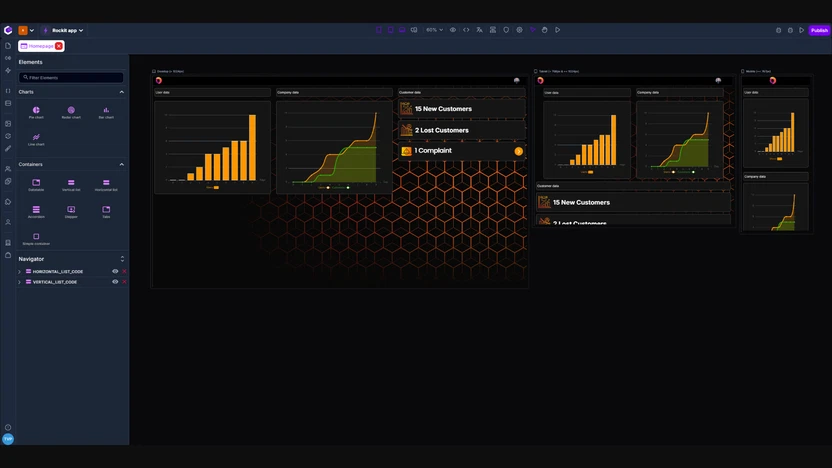
Cost-Effectiveness: Lowers development costs by eliminating the need for extensive coding resources.
Accessibility: Empowers non-technical users (citizen developers) to create applications.
Agility: Enables quick iterations and adjustments based on user feedback.
Reduced Technical Debt: Visual workflows can be easier to understand and maintain than complex codebases.
Integrated Security Protocols:
This is the crucial aspect that differentiates robust no-code platforms from basic ones. It means that security is built into the platform’s core architecture, rather than being an afterthought.
Essential Security Features:
Data Encryption: Protecting sensitive data both in transit and at rest.
Access Control (Role-Based Access Control – RBAC): Restricting user access based on predefined roles and permissions.
Authentication and Authorization: Securely verifying user identities and granting appropriate access levels.
Input Validation and Sanitization: Preventing malicious data from entering the system.
Vulnerability Scanning and Patching: Regularly identifying and addressing security vulnerabilities.
Compliance with Industry Standards (e.g., GDPR, HIPAA, SOC 2): Ensuring adherence to relevant data privacy and security regulations.
Secure API Integrations: Protecting data exchange between the app and external services.
Audit Logging: Tracking user actions and system events for security monitoring and incident response.
Protection against common web attacks: Including SQL injection, Cross-Site Scripting (XSS), and Cross-Site Request Forgery (CSRF).
Importance of No Code-X:
Data Protection: Safeguarding sensitive user and business data.
Compliance: Meeting regulatory requirements and avoiding legal penalties.
Reputation Management: Maintaining user trust and confidence.
Risk Mitigation: Reducing the likelihood of security breaches and cyberattacks.
Scalability: Assuring that security measures can handle growth and increased usage.
The Synergistic Effect:
The combination of fast-track no-code development and integrated security.
Accelerated Secure App Development: Enables organizations to rapidly build and deploy secure applications without compromising on speed or security.
Democratized Secure App Creation: Empowers non-technical users to create secure applications, expanding the pool of potential developers.
Read more
Summarize Podcasts and Videos Efficiently by Transcript.LOL
Reduced Security Risks: Minimizes the risk of security vulnerabilities and breaches by building security into the development process.
Enhanced Compliance: Simplifies compliance efforts by providing built-in security features and adherence to industry standards.
Improved Business Agility: Allows organizations to quickly adapt to changing market demands and security threats.
Use Cases:
- Internal Business Applications: Building secure employee portals, workflow automation tools, and data management systems.
- Customer-Facing Applications: Creating secure mobile apps for e-commerce, customer support, and online services.
- Healthcare Applications: Developing HIPAA-compliant patient portals and medical data management systems.
- Financial Applications: Building secure banking and financial services apps.
- Government Applications: Creating secure citizen portals and public service applications.
Considerations:
- Platform Selection: Carefully evaluate no-code platforms based on their security features, compliance certifications, and track record.
- Data Governance: Establish clear data governance policies and procedures to ensure data security and privacy.
- Security Training: Provide security awareness training to all users and developers.
- Regular Security Audits: Conduct periodic security audits and penetration testing to identify and address vulnerabilities.
- Scalability and Performance: Ensure that the platform can handle the demands of growing user bases and data volumes.


